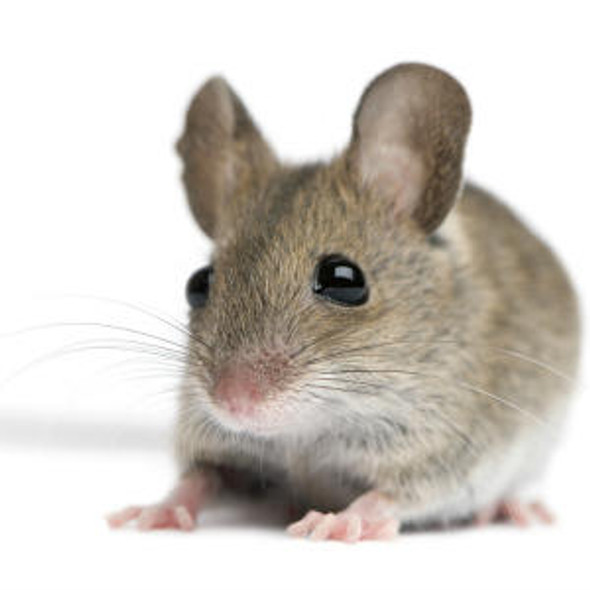Rat HSPA8 ELISA Kit
- SKU:
- RTFI00302
- Product Type:
- ELISA Kit
- Size:
- 96 Assays
- Uniprot:
- P63018
- Sensitivity:
- 0.375ng/ml
- Range:
- 0.625-40ng/ml
- ELISA Type:
- Sandwich
- Synonyms:
- Hspa8, HSC54, HSC70, HSC71, HSP71, HSP73, HSPA10, NIP71, LAP1, Heat shock 70 kDa protein 8, heat shock cognate 71 kDa protein, heat shock cognate protein 54, heat shock cognate protein, 71-kDa, heat shock 70kd protein 10, constitutive heat shock prot
- Reactivity:
- Rat
- Research Area:
- Epigenetics and Nuclear Signaling
Description
Rat HSPA8 ELISA Kit
The Rat HSPA8 (Heat Shock 70kDa Protein 8) ELISA Kit is specifically designed for the precise measurement of HSPA8 levels in rat serum, plasma, and tissue homogenates. This kit offers exceptional sensitivity and specificity, guaranteeing robust and reproducible results suitable for a variety of research applications.HSPA8 is a vital chaperone protein involved in cellular stress response and protein folding, playing a crucial role in maintaining cellular homeostasis. Dysregulation of HSPA8 has been linked to various diseases, including neurodegenerative disorders, cardiovascular diseases, and cancer, highlighting its importance as a biomarker for disease progression and potential therapeutic targets.
By utilizing the Rat HSPA8 ELISA Kit, researchers can accurately quantify HSPA8 levels in rat samples, facilitating a deeper understanding of the protein's involvement in disease pathogenesis and providing valuable insights for future drug development strategies.
| Product Name: | Rat Hspa8 (Heat shock cognate 71 kDa protein) ELISA Kit |
| Product Code: | RTFI00302 |
| Size: | 96 Assays |
| Target: | Rat Hspa8 |
| Alias: | Hspa8, HSC54, HSC70, HSC71, HSP71, HSP73, HSPA10, NIP71, LAP1, Heat shock 70 kDa protein 8, heat shock cognate 71 kDa protein, heat shock cognate protein 54, heat shock cognate protein, 71-kDa, heat shock 70kd protein 10, constitutive heat shock protein 70, lipopolysaccharide-associated protein 1, LPS-associated protein 1, N-myristoyltransferase inhibitor protein 71 |
| Reactivity: | Rat |
| Detection Method: | Sandwich ELISA, Double Antibody |
| Sensitivity: | 0.375ng/ml |
| Range: | 0.625-40ng/ml |
| Storage: | 4°C for 6 months |
| Note: | For Research Use Only |
| Recovery: | Matrices listed below were spiked with certain level of Rat Hspa8 and the recovery rates were calculated by comparing the measured value to the expected amount of Rat Hspa8 in samples. | ||||||||||||||||
| |||||||||||||||||
| Linearity: | The linearity of the kit was assayed by testing samples spiked with appropriate concentration of Rat Hspa8 and their serial dilutions. The results were demonstrated by the percentage of calculated concentration to the expected. | ||||||||||||||||
| |||||||||||||||||
| Intra-Assay: | CV <8% | ||||||||||||||||
| Inter-Assay: | CV <10% |
| Uniprot: | P63018 |
| UniProt Protein Function: | HSC70: Acts as a repressor of transcriptional activation. Inhibits the transcriptional coactivator activity of CITED1 on Smad-mediated transcription. Chaperone. Isoform 2 may function as an endogenous inhibitory regulator of HSC70 by competing the co- chaperones. Interacts with HSPH1/HSP105. Interacts with IRAK1BP1. Identified in a mRNP granule complex, at least composed of ACTB, ACTN4, DHX9, ERG, HNRNPA1, HNRNPA2B1, HNRNPAB, HNRNPD, HNRNPL, HNRNPR, HNRNPU, HSPA1, HSPA8, IGF2BP1, ILF2, ILF3, NCBP1, NCL, PABPC1, PABPC4, PABPN1, RPLP0, RPS3, RPS3A, RPS4X, RPS8, RPS9, SYNCRIP, TROVE2, YBX1 and untranslated mRNAs. Interacts with PACRG and TSC2. Interacts with BAG1. Interacts with SV40 VP1. Interacts with DNAJC7. Interacts with HERC5. Interacts with CITED1 (via N-terminus); the interaction suppresses the association of CITED1 to p300/CBP and Smad-mediated transcription transactivation. Constitutively synthesized. Ubiquitous. Belongs to the heat shock protein 70 family. 2 isoforms of the human protein are produced by alternative splicing. |
| UniProt Protein Details: | Protein type:Chaperone; Heat shock protein; Nucleolus; RNA-binding Chromosomal Location of Human Ortholog: 8q22 Cellular Component: asymmetric synapse; autophagic vacuole; axon; cell soma; cell surface; cytoplasm; cytosol; dendrite; dendritic shaft; dendritic spine; extracellular space; focal adhesion; intermediate filament; intracellular; late endosome; lipid raft; lysosomal membrane; lysosome; membrane; microtubule; myelin sheath; neuron projection; nucleus; perikaryon; perinuclear region of cytoplasm; photoreceptor inner segment; postsynaptic density; protein complex; ribonucleoprotein complex; synaptic vesicle; terminal button; ubiquitin ligase complex Molecular Function:A1 adenosine receptor binding; ADP binding; ATP binding; ATPase activity; ATPase activity, coupled; enzyme binding; G-protein-coupled receptor binding; heat shock protein binding; peptide binding; phosphatidylserine binding; protein binding; receptor binding; RNA binding; transcription factor binding; ubiquitin protein ligase binding; unfolded protein binding Biological Process: aging; ATP metabolic process; axon cargo transport; cellular protein complex disassembly; cerebellum development; chaperone cofactor-dependent protein folding; forebrain development; G1/S transition of mitotic cell cycle; kidney development; negative regulation of transcription, DNA-dependent; positive regulation of catalytic activity; positive regulation of nuclear mRNA splicing, via spliceosome; positive regulation of phagocytosis; positive regulation of proteolysis; positive regulation of T cell mediated cytotoxicity; protein amino acid autophosphorylation; protein folding; protein import into nucleus; protein refolding; regulation of cell cycle; regulation of protein stability; response to activity; response to drug; response to estradiol stimulus; response to ethanol; response to heat; response to nickel ion; response to progesterone stimulus; response to starvation; sensory perception of smell; skeletal muscle development |
| NCBI Summary: | member of the hsp70 protein; expressed in unstressed cells [RGD, Feb 2006] |
| UniProt Code: | P63018 |
| NCBI GenInfo Identifier: | 51702273 |
| NCBI Gene ID: | 24468 |
| NCBI Accession: | P63018.1 |
| UniProt Secondary Accession: | P63018,P08109, P12225, Q4FZY7, Q62373, Q62374, Q62375 |
| UniProt Related Accession: | P63018 |
| Molecular Weight: | 70,871 Da |
| NCBI Full Name: | Heat shock cognate 71 kDa protein |
| NCBI Synonym Full Names: | heat shock protein family A (Hsp70) member 8 |
| NCBI Official Symbol: | Hspa8 |
| NCBI Official Synonym Symbols: | Hsc70 |
| NCBI Protein Information: | heat shock cognate 71 kDa protein |
| UniProt Protein Name: | Heat shock cognate 71 kDa protein |
| UniProt Synonym Protein Names: | Heat shock 70 kDa protein 8 |
| UniProt Gene Name: | Hspa8 |
| Step | Procedure |
| 1. | Set standard, test sample and control (zero) wells on the pre-coated plate respectively, and then, record their positions. It is recommended to measure each standard and sample in duplicate. Wash plate 2 times before adding standard, sample and control (zero) wells! |
| 2. | Aliquot 0.1ml standard solutions into the standard wells. |
| 3. | Add 0.1 ml of Sample / Standard dilution buffer into the control (zero) well. |
| 4. | Add 0.1 ml of properly diluted sample ( Human serum, plasma, tissue homogenates and other biological fluids.) into test sample wells. |
| 5. | Seal the plate with a cover and incubate at 37°C for 90 min. |
| 6. | Remove the cover and discard the plate content, clap the plate on the absorbent filter papers or other absorbent material. Do NOT let the wells completely dry at any time. Wash plate X2. |
| 7. | Add 0.1 ml of Biotin- detection antibody working solution into the above wells (standard, test sample & zero wells). Add the solution at the bottom of each well without touching the side wall. |
| 8. | Seal the plate with a cover and incubate at 37°C for 60 min. |
| 9. | Remove the cover, and wash plate 3 times with Wash buffer. Let wash buffer rest in wells for 1 min between each wash. |
| 10. | Add 0.1 ml of SABC working solution into each well, cover the plate and incubate at 37°C for 30 min. |
| 11. | Remove the cover and wash plate 5 times with Wash buffer, and each time let the wash buffer stay in the wells for 1-2 min. |
| 12. | Add 90 µL of TMB substrate into each well, cover the plate and incubate at 37°C in dark within 10-20 min. (Note: This incubation time is for reference use only, the optimal time should be determined by end user.) And the shades of blue can be seen in the first 3-4 wells (with most concentrated standard solutions), the other wells show no obvious color. |
| 13. | Add 50 µL of Stop solution into each well and mix thoroughly. The color changes into yellow immediately. |
| 14. | Read the O.D. absorbance at 450 nm in a microplate reader immediately after adding the stop solution. |
When carrying out an ELISA assay it is important to prepare your samples in order to achieve the best possible results. Below we have a list of procedures for the preparation of samples for different sample types.
| Sample Type | Protocol |
| Serum: | If using serum separator tubes, allow samples to clot for 30 minutes at room temperature. Centrifuge for 10 minutes at 1,000x g. Collect the serum fraction and assay promptly or aliquot and store the samples at -80°C. Avoid multiple freeze-thaw cycles. If serum separator tubes are not being used, allow samples to clotovernight at 2-8°C. Centrifuge for 10 minutes at 1,000x g. Removeserum and assay promptly or aliquot and store the samples at-80°C. Avoid multiple freeze-thaw cycles. |
| Plasma: | Collect plasma using EDTA or heparin as an anti-coagulant. Centrifuge samples at 4°C for 15 mins at 1000 × g within 30 mins of collection. Collect the plasma fraction and assay promptly or aliquot and store the samples at -80°C. Avoid multiple freeze-thaw cycles.Note: Over haemolysed samples are not suitable for use with this kit. |
| Urine & Cerebrospinal Fluid: | Collect the urine (mid-stream) in a sterile container, centrifuge for 20 mins at 2000-3000 rpm. Remove supernatant and assay immediately. If any precipitation is detected, repeat the centrifugation step. A similar protocol can be used for cerebrospinal fluid. |
| Cell Culture Supernatant: | Collect the cell culture media by pipette, followed by centrifugation at 4°C for 20 mins at 1500 rpm. Collect the clear supernatant and assay immediately. |
| Cell Lysates: | Solubilize cells in lysis buffer and allow to sit on ice for 30 minutes. Centrifuge tubes at 14,000 x g for 5 minutes to remove insoluble material. Aliquot the supernatant into a new tube and discard the remaining whole cell extract. Quantify total protein concentration using a total protein assay. Assay immediately or aliquot and store at ≤ -20°C. |
| Tissue Homogenates: | The preparation of tissue homogenates will vary depending upon tissue type. Rinse tissue with 1X PBS to remove excess blood & homogenizein 20ml of 1X PBS (including protease inhibitors) and store overnight at ≤ -20°C. Two freeze-thaw cycles are required to break the cell membranes. To further disrupt the cell membranes you can sonicate the samples. Centrifuge homogenates for 5 mins at 5000xg. Remove the supernatant and assay immediately or aliquot and store at -20°C or-80°C. |
| Tissue Lysates: | Rinse tissue with PBS, cut into 1-2 mm pieces, and homogenize with a tissue homogenizer in PBS. Add an equal volume of RIPA buffer containing protease inhibitors and lyse tissues at room temperature for 30 minutes with gentle agitation. Centrifuge to remove debris. Quantify total protein concentration using a total protein assay. Assay immediately or aliquot and store at ≤ -20 °C. |
| Breast Milk: | Collect milk samples and centrifuge at 10,000 x g for 60 min at 4°C. Aliquot the supernatant and assay. For long term use, store samples at -80°C. Minimize freeze/thaw cycles. |









